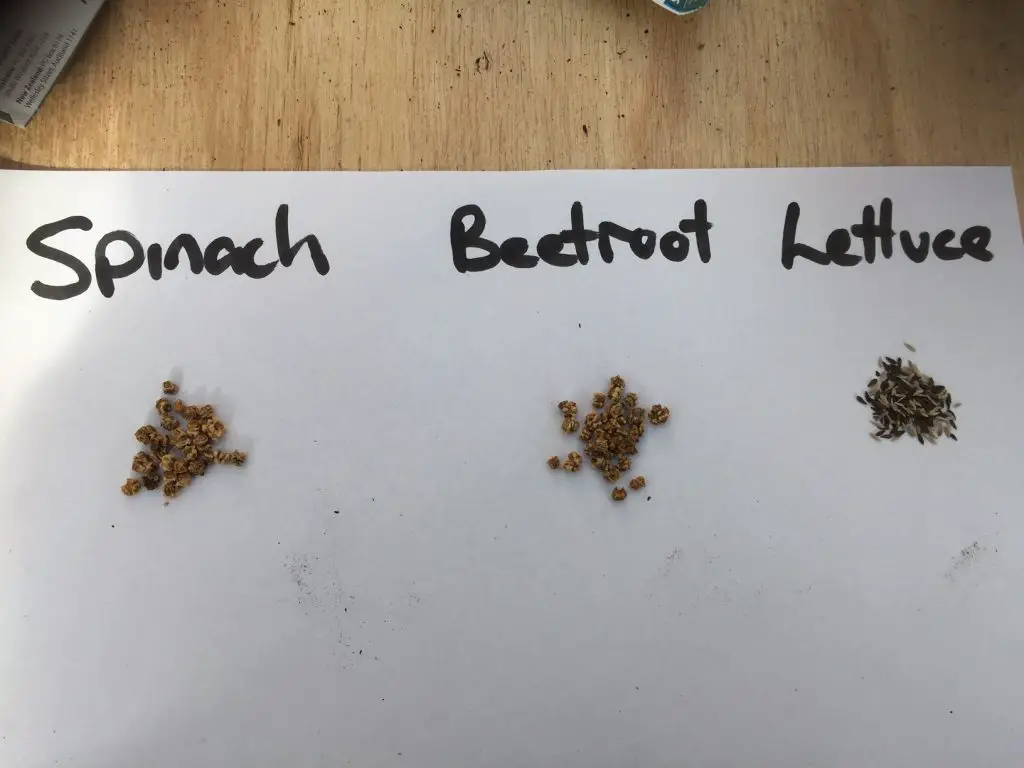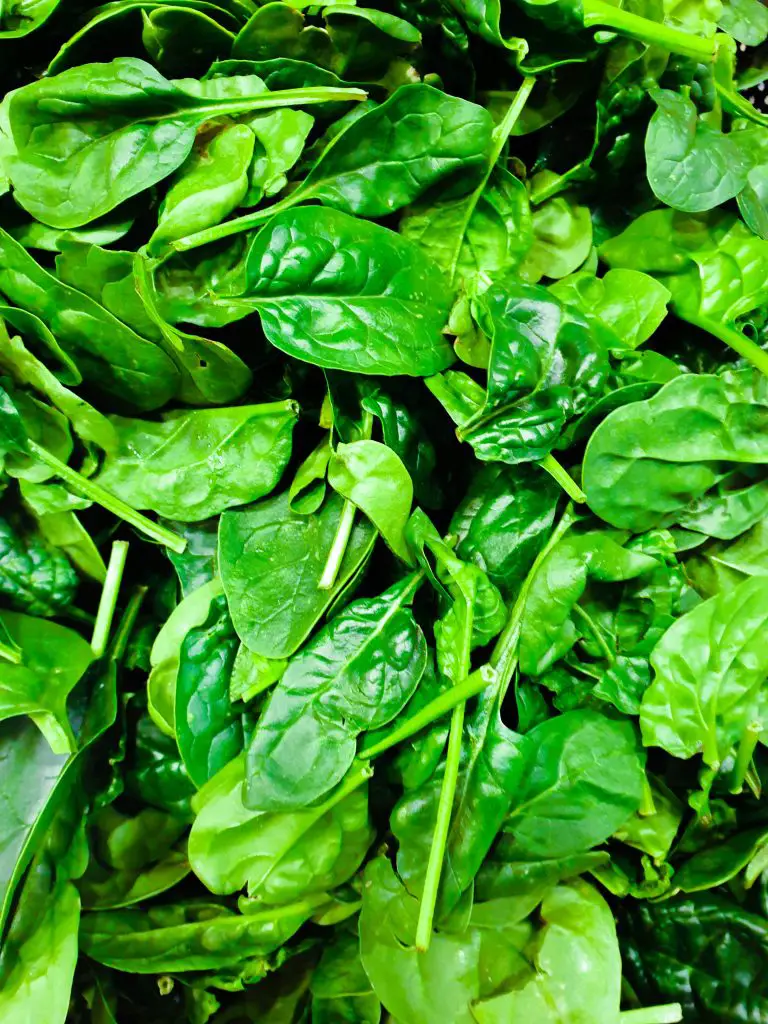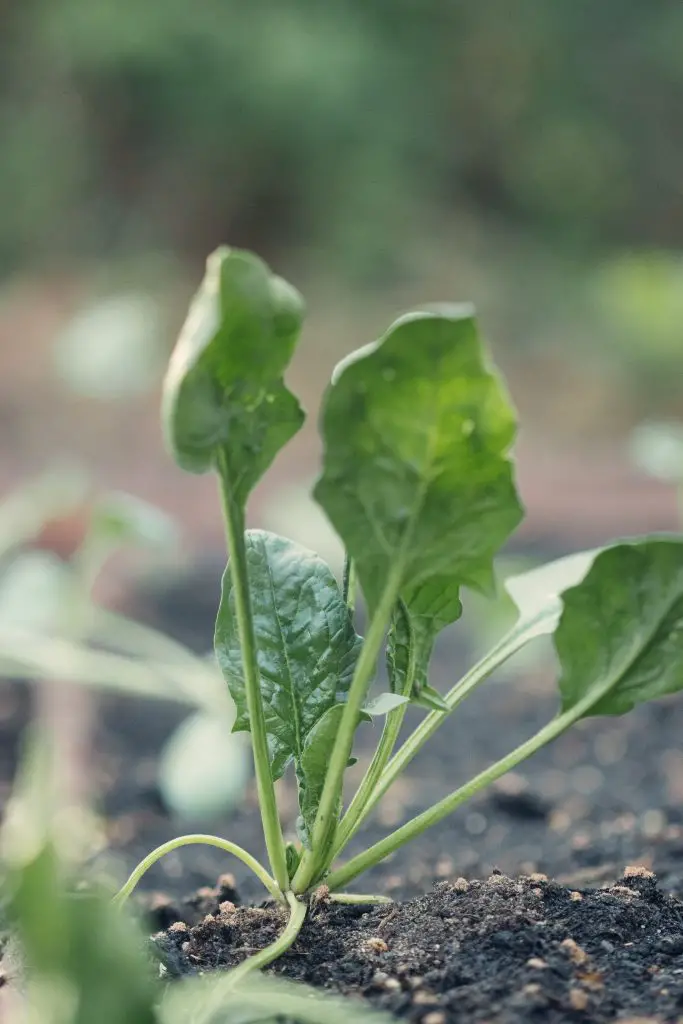Is Spinach A Type Of Lettuce? Spinach is a widely produced leafy crop that is sold in the major grocery stores in a loose-leaf form by itself or as part of a mixed lettuce blend. Given that spinach is sold as part of a lettuce mixture is it just another type of lettuce or something that is completely different?
Spinach is not just another form of lettuce or even a closely related species to lettuce, it is actually from a completely different family. Spinach is from the Amaranth family, which contains plants such as beetroot, chard, and mangel-wurzel. Whereas lettuce comes from the Aster family (Daisies) and is most closely related to things like the sunflowers and the globe artichoke.
It may seem odd that a leafy crop like spinach is not related to lettuce however when you handle the seeds and grow the plants it becomes apparent why the plants are not related. The easiest way to tell if plants are related is to look at the shape of the seeds and the shape of the seedling leaves which look remarkably similar when the plants are from the same family.
The image below shows a comparison between beetroot, spinach, and a packet of mixed lettuce seeds that contains several different varieties. The distinct differences between Lettuce and Spinach are clearly evident.

About Spinach
Spinach is an annual edible plant that typically grows to a height of 6 to 12 inches and grows best in the cooler parts of the year, ideally when the temperatures remain below 68°F (20°C). At temperatures above this, the plant tends to bolt readily.
The plant itself originated in the middle east, specifically in the areas surrounding Iran. The vegetable progressively spread eastward through India and China and the first written reference to the vegetable appeared in China in 647. However, it did not appear in Europe until 180 years later when it was brought by Saracens to Sicily in 827.
Spinach gradually made its way across Europe but it did not come to England until the 14th where it became very popular there because it was one of the few plants that produced crops in spring. Hence it became an important crop in the critical part of the year known as the hungry gap.
The traditional heirloom varieties were known for having relatively narrow leaves, prickly seeds and also had a tendency to bolt relatively quickly. However, over time newer varieties have been developed that have broader leaves, a reduced tendency to bolt while retaining the strong and bitter taste of the older types.
Today there are 3 main types of spinach, savoy, semi-savoy, and hybrid varieties. Savoy varieties have dark green leaves which are crinkly, whereas Semi-savoy varieties tend to have a smoother surface. Hybrid varieties have only slightly crinkled leaves, which is advantageous for commercial production because they are easier to clean.

How To Grow Spinach
As mentioned earlier in the article, Spinach is a plant that performs best in the cooler part of the year, as such to produce a reasonable crop the timing of sowing is critical to avoid the warm part of the year.
This means the sowing is generally limited to late winter to early spring and the end of summer to early Autumn. However, if you live in a climate the has relatively mild winters the plant can be grown throughout the winter, which allows sowings to occur later in Autumn. Mature spinach plants can withstand temperatures of 20°F (-6°C).
Spinach seeds can be sown directly into the garden, however, I generally recommend starting the plant off in seed trays. The main reason for this is that it allows the seeds to be sown earlier allowing an earlier crop to be produced in spring. It is also advantageous to plant the mid-season sowing into trays as it minimizes the time that the plant spends in the garden allowing other crops to be grown.
Planting Spinach Seeds
When sowing spinach seeds in trays it is best to use seed raising mix and sow the seeds at a depth of 0.5 inches (1 cm). This can be done around 6 weeks prior to the last frost at the earliest. Once the seeds are in the soil they will typically take around 7 to 10 days to appear provided that the conditions are warm enough.
If you live in a relatively cold climate it may be worth considering purchasing a heated propagation tray as they make it easy to maintain a warm, moist, and humid environment which are ideal for germinating seeds. The one we recommend is the iPower Heating Seed Starter Germination Kit, shown in the picture below largely because it has a vented humidity dome and is relatively inexpensive. Click on the link to see the current price on Amazon.

Once the seedlings emerge it is important to ensure that they remain moist. The seedlings will typically need to stay in the seed trays for approximately 4 to 6 weeks before they can be planted outside in the garden.
Transplanting Seedlings Into The Garden
When the seedlings are large enough to be planted out into the garden they should be spaced approximately 12 inches apart. Spinach can be grown in either full sun or part shade, with the ideal position being dependent upon the ambient temperature.
In cases where it is relatively cold, it is best to plant the spinach in a sunny location, however, the day temperatures are exceeding 68°F (20°C). It may be worth planting the spinach in partial shade to reduce the chances of the plant bolting. As the young seedlings are susceptible to attack from snails and slugs it is advisable to sprinkle snail pellets around the plants.
In terms of soil conditions, spinach will tolerate a wide range of soil types but they prefer rich, moist but free-draining soil. Spinach will typically take a further 4 weeks or so to reach the size where the leaves can be harvested.

Harvesting Spinach
To make the most of the leaves it is advisable to take a harvest from the plant every week or two. To ensure that the plant can continuously produce leaves it is important to remove the out leaves only, leaving only a few central ones. Leaving these central leaves will allow the plant to quickly recover and produce more leaves for the next harvest.
Once the temperatures warm up it is likely that the spinach will start to produce a flower spike. At this point, the leaves will start to become bitter and the plant should be removed are replaced with heat-loving plants.
